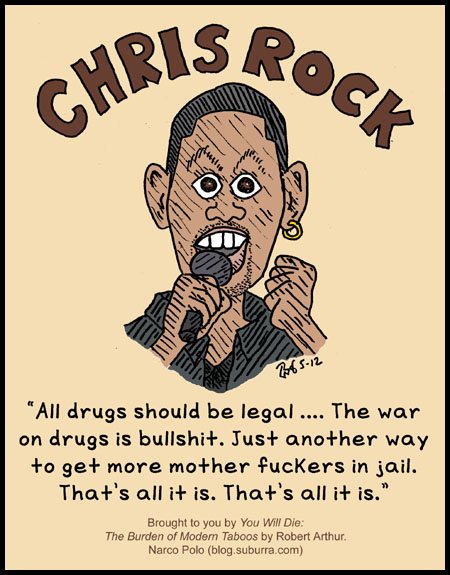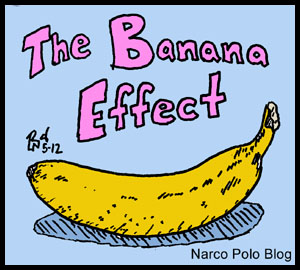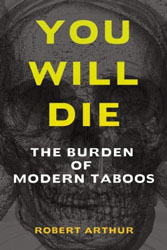In Defense of Drug Dealers: The Pusher Myth
Posted: May 23rd, 2012 | Filed under: addiction, cocaine, drugs, media bias | 5 Comments »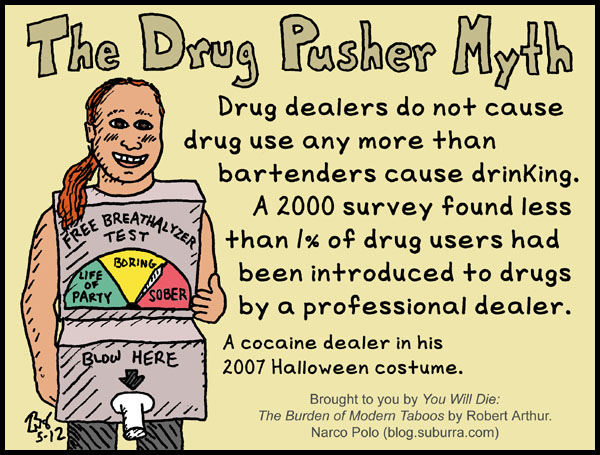
In the late ’00s I was friends with a cocaine dealer. Everyone I knew thought he was a great guy.
Since we were in the same social circle, I was also acquainted with dozens of his customers. Only one of them arguably had a cocaine problem, and he was not an out-of-control addict.* His friends merely thought he used cocaine too often and spent too much money on it. Cocaine’s interference with this customer’s job was minimal. It was certainly not any more of a hindrance than his periodic binge drinking.
I once asked the dealer about dealing with addicts. He said he refused to sell to them. Out-of-control users were a nuisance. They would come to his place at odd hours unannounced and could be obnoxious and loud. Dealing with these people was dangerous because he wanted to stay as covert as possible to avoid police attention.
The Myth
One of the countless myths underpinning the drug war is that drug dealers “push” drugs on people. This is an asinine stereotype for a couple reasons. First, due to criminalization demand almost always outweighs supply. There is no need for dealers to aggressively sell their product. As the comedian Chris Rock has said:
Drugs sell themselves. It’s crack. It’s not an encyclopedia. It’s not a fucking vacuum cleaner. You don’t really gotta try to sell crack, OK? I’ve never heard a crack dealer go, “Man, how am I going to get rid of all this crack? It’s just piled up in my house.” (6)
(For more of Chris Rock’s opinions on drug dealing go here.)
Second, drug dealing is an illegal activity. Dealers do not want to pester non-drug users for fear that they might report them to the police. Dealers are more wary of their clients than their clients are of them. This reluctance is particularly true for pushing drugs on children. Contrary to their demonic portrayal in the media, dealers are not evil and many of them do not think drugs are appropriate for kids. Also, it would be a stupid risk to take considering most children have guardians watching them and scant income.
When I worked as a public defender, I asked several of my colleagues with decades of experience if they had ever seen a drug dealer prosecuted for selling to a juvenile under the harsh school-zone mandatory-minimum sentencing guidelines. None of them had ever heard of it happening. It was frequently police officers baiting dealers into selling to adults in a school zone or adult deals going down at the periphery of one. Because the zone extended over three football fields from any school land, one of my marijuana-dealing clients did not even know he was in a school zone. In another school-zone case an adult deal went down in a private apartment.
Researchers have long known that the drug pusher was largely a myth, but it was not until a 2000 survey that it was quantified. This survey of drug-treatment patients found that less than 1% of them had been introduced to drugs by a professional dealer. In contrast, 19% had been introduced to drugs by a family member. (5)
The Propaganda
Despite this finding, supposedly objective news outlets continue to refer to drug dealers as pushers. A recent New York Daily News article opened with the following sentence, “Fourteen suspected drug pushers were arrested Thursday morning for operating a narcotics ring in two Brooklyn bodegas ….” (2)
The popular media and the government are even worse. Here are some graphic examples from different eras:
A 1971 Green Lantern comic book:
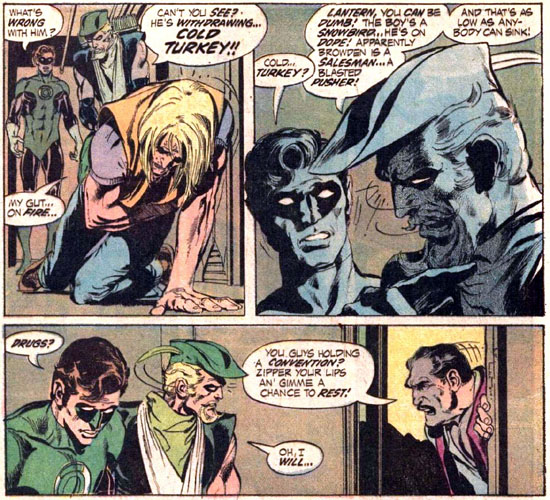 (4)
(4)
An award-winning 1994 Partnership for a Drug-Free America public service announcement that bizarrely claimed young kids have to run past drug dealers or else they will be forced to do drugs. It ends with the narrator saying, “To Kevin Scott and all the other kids who take the long way home. We hear you. Don’t give up.”
A 2007 billboard in Central Pennsylvania:
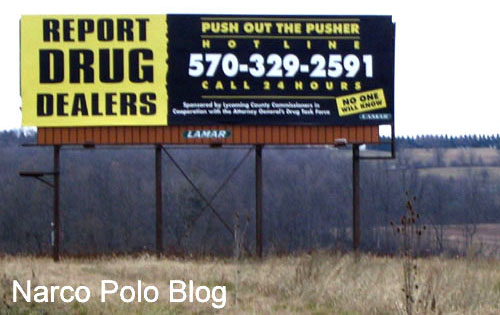
For more examples see “The Aggressive Drug Dealer” page at TVTropes.org.
* This dependence rate is not surprising as cocaine dependence rates are similar to alcohol’s. (1) In addition, the social group that the dealer and I shared had several characteristics that ameliorate addiction risk. They were older, had above-average intelligence, and were not impoverished. (3)
Sources
1. James Anthony, Lynn Warner, & Ronald Kessler, “Comparative Epidemiology of Dependence ….,” Exp. Clin. Psychopharmacol., 1994, 2(3), p. 251.
2. Sarah Armaghan, “Police Nab 14 in Drug Ring Operating Out of Brooklyn Bodegas,” NYDailyNews.com, 27 Apr. 2012. LINK
3. Robert Arthur, “Addictive Personality and the Non-Randomness of Addiction,” Narco Polo (blog), 5 Oct. 2011. LINK
4. Green Lantern, Vol. 2, #85, Aug. 1971. LINK
5. “One in Five Drug Abusers Needing Treatment Did Drugs with Parents,” PRNewswire, 24 Aug. 2000. LINK
6. Chris Rock, Bring the Pain (1996).

